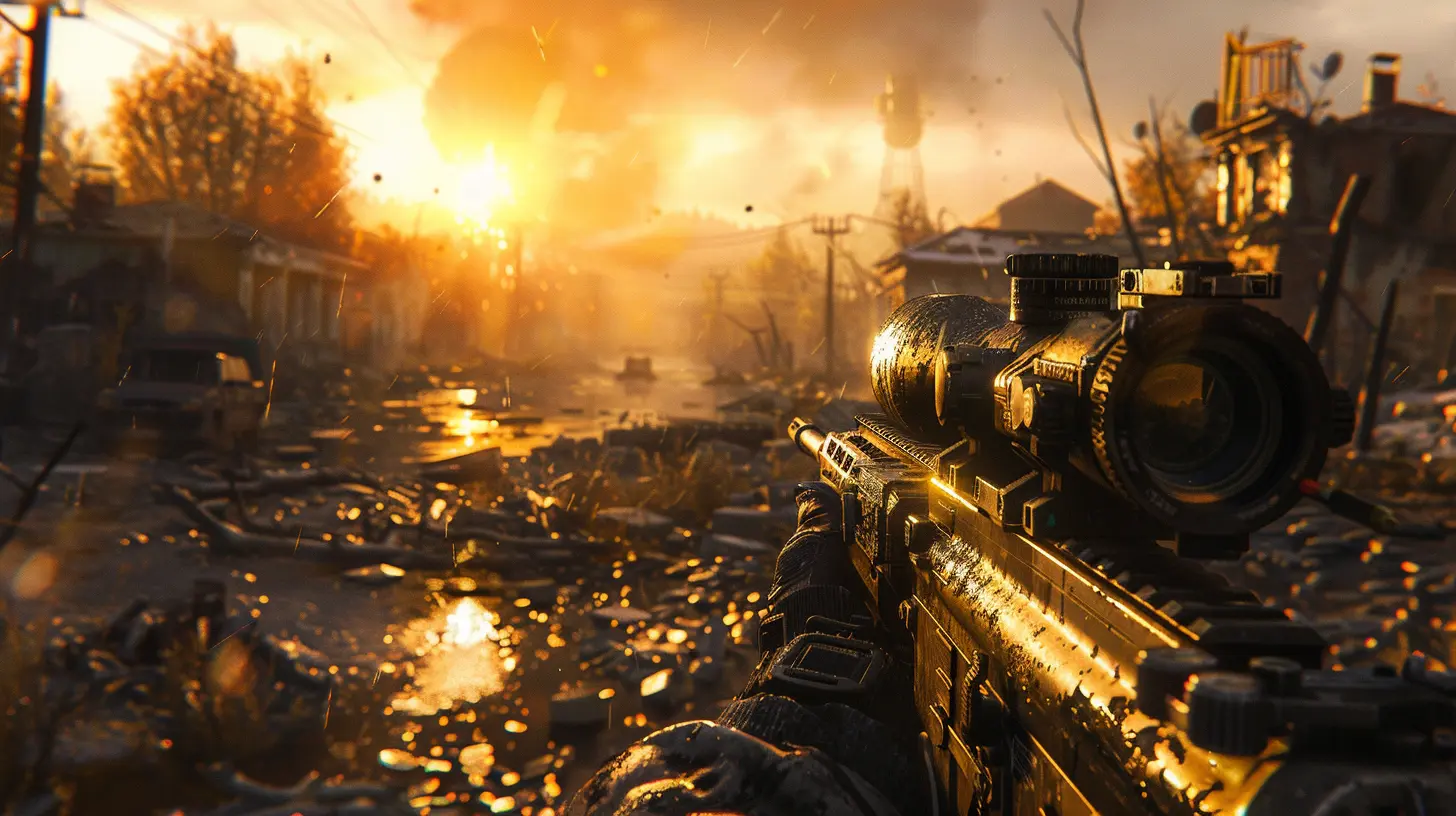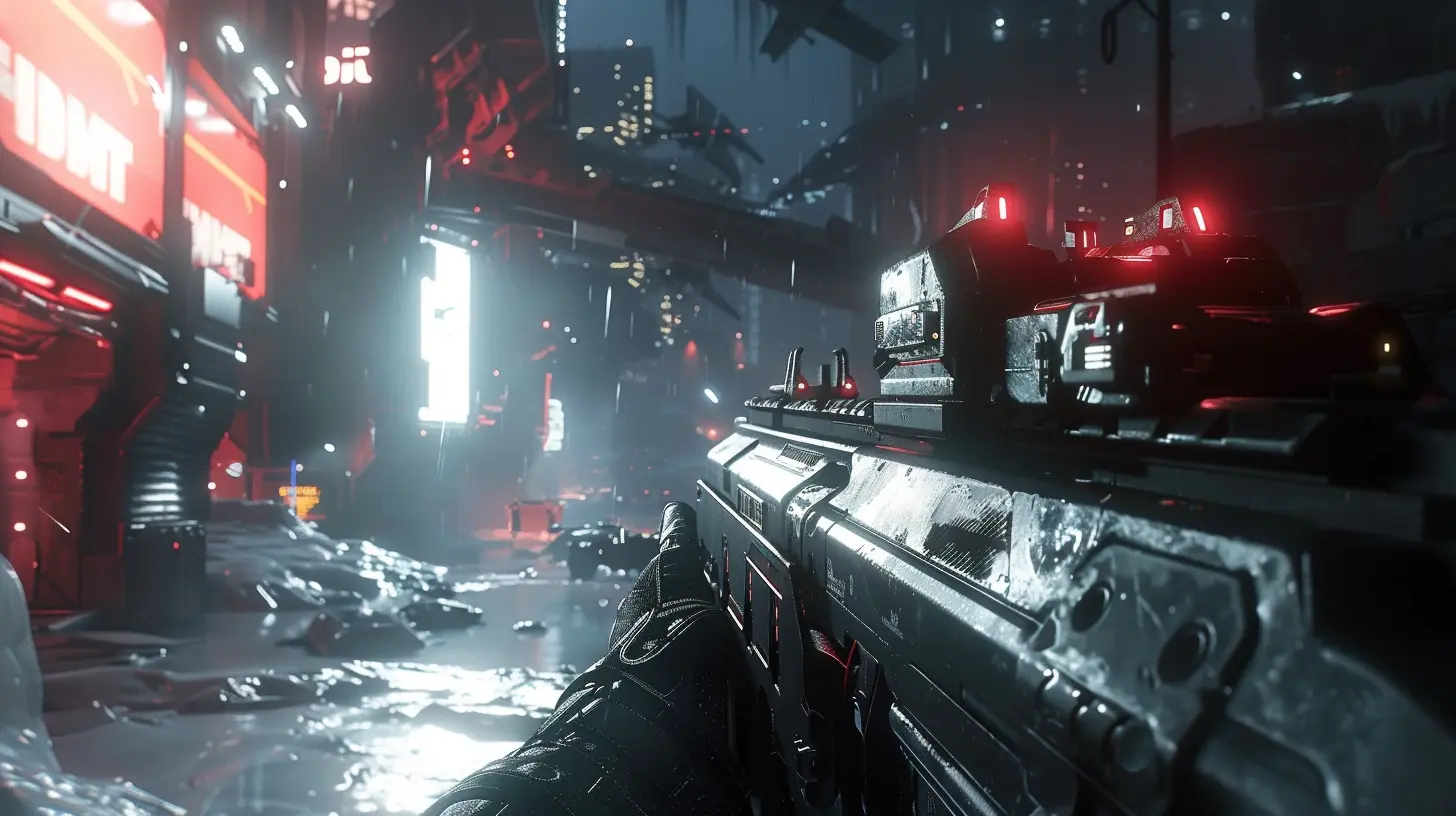Examining the Role of Physics Engines in Modern FPS Titles
21 June 2025
When was the last time you noticed a crate rolling down a hill in a first-person shooter (FPS) and thought, "Wow, that looks real!"? Physics engines make these moments possible, and their role in modern FPS titles is far more significant than most of us realize. Beyond just looking cool, they fundamentally shape the way we experience these games. From realistic bullet trajectories to destructible environments, physics engines add layers of immersion that pull us deeper into a game's world. But how do these invisible systems work, and why do they matter so much in FPS games? Let’s dive into it.
What Exactly Is a Physics Engine?
Alright, let’s start with the basics. A physics engine is essentially the behind-the-scenes wizardry that simulates real-world physics in a video game. It’s the reason objects fall when you let go of them, explosions send debris flying in realistic directions, and grenades bounce off walls in ways that make you curse your lousy aim.Think of a physics engine as a set of rules the game world follows. These rules mimic real-world physics, but they can be tweaked to make things more dramatic or fun. For instance, in some games, explosions might throw barrels farther than they would in real life because, hey, it’s way more satisfying to watch things fly across the map like bottle rockets, right?
Why Are Physics Engines So Important in FPS Games?
Let’s face it: FPS games thrive on immersion. If the world around the player doesn’t feel believable, the whole experience can fall apart faster than a cheap folding chair. Physics engines play a huge role in keeping everything grounded and interactive.Here’s how they make FPS games shine:
1. Realistic Ballistics
Ever noticed how some FPS titles make shooting feel incredibly authentic? That comes down to ballistics, which physics engines handle beautifully. These systems calculate how bullets travel through the air, accounting for things like gravity, wind resistance, and even material penetration.Take Sniper Elite as an example. The game’s physics engine factors in everything from bullet drop to wind direction, making every shot feel like a physics puzzle. Without these calculations, your sniper rifle might as well be a glorified laser pointer.
2. Environmental Interaction
Picture this: you’re pinned down by enemy fire, and you spot a flimsy wooden crate nearby. Naturally, your first instinct is to take cover, right? But wait—what if that crate splinters apart under enemy bullets? In many modern FPS games, the physics engine ensures that interactions like this feel real.Games like Battlefield are prime examples. The Frostbite engine, which powers the series, lets you blow up buildings, level cover, or watch doors swing open as if they have weight and hinges. This level of interactivity keeps players thinking on their feet.
3. Destructible Environments
There’s something undeniably satisfying about blowing stuff up in FPS games. Whether you're toppling entire buildings or just obliterating a small fence, destructible environments make everything feel dynamic. Physics engines control this destruction in a way that feels organic—walls crumble piece by piece, and debris scatters naturally.The Red Faction series is practically a masterclass in destruction. Using its GeoMod engine, players could blast through walls, tunnels, and even cut their own pathways through levels. That kind of freedom? All thanks to rock-solid physics simulations.
4. Immersive Player Movement
Ever slide down a hill or vault over a low wall in an FPS and think, "Man, that movement felt good?" That’s not just smooth animation; it’s the physics engine at work. Player movement feels so grounded because the engine tracks gravity, impact, and momentum.Games like Titanfall 2 take this concept to the next level. The way your character wall-runs, slides, and lands feels fluid and believable, giving you that rush of adrenaline. Without a well-tuned physics system, such mechanics would feel clunky or downright awkward. 
The Evolution of Physics Engines in FPS Games
If you rewind a couple of decades, physics in FPS games was... let’s just say “basic.” Objects were static, bullets hit invisible walls, and explosions were glorified fireworks. Then, the early 2000s happened, and everything changed.When Half-Life 2 introduced the Source engine, gamers were blown away (pun intended). For the first time, interacting with the environment felt natural. You could pick up barrels, toss objects, and even use a gravity gun to manipulate the world around you. It wasn’t just gameplay—it was a physics playground.
Fast forward to today, and physics engines have gone from being a cool extra to a must-have feature. Engines like Unreal Engine, Frostbite, and Unity push the boundaries of realism, blending physics seamlessly into gameplay mechanics. 
Balancing Realism and Fun
Now, here’s the trick: not all players want hardcore realism. Physics engines often need to find a sweet spot between being realistic and being enjoyable.For instance, in Call of Duty, you’ll notice that some objects behave more like props than physical objects. Why? Because maintaining a fast-paced, arcade-style FPS experience is more important than dropping hyper-realistic physics into the mix.
On the flip side, games like Escape from Tarkov lean into ultra-realistic physics. Every bullet has weight, every surface reacts differently, and even reloading feels like an intense procedure. It’s not for everyone, but it’s a testament to how diverse FPS gaming can be.
The Challenges of Advanced Physics Engines
Creating a physics engine that feels natural is no walk in the park. Developers face challenges like:- Performance Limitations: Advanced physics simulations can eat through processing power like candy. Developers often have to strike a balance between realism and frame rates, especially on consoles.
- Player Expectations: Gamers are sharp. If something doesn’t behave like they think it should—like a grenade bouncing unnaturally—it breaks immersion. Developers must ensure everything “feels” right.
- Buggy Behavior: Ever seen a game glitch out and send a car flying into space? Physics bugs can be hilarious, but they’re also a nightmare for devs trying to maintain immersion.
The Future of Physics in FPS Games
So, where are we headed? As hardware gets more powerful, we can expect physics engines to step up their game as well. Here’s what may lie ahead:1. Advanced Destruction
Imagine entire cities that react realistically to explosions. Walls wouldn’t just break—they’d crumble based on material type, structural integrity, and force. Sandbox FPS games might become even more chaotic (in the best way possible).2. Deeper Environmental Interactions
Future FPS games could offer even more interactive environments. Picture being able to carve out tunnels, knock over trees to create cover, or use water physics to flood an enemy camp. The possibilities are endless.3. AI-Driven Physics
What if AI calculated physics on the fly? Instead of predefined rules, future engines could adapt to player actions dynamically. This would make every encounter unique and far less predictable.Wrapping It Up
Physics engines are the unsung heroes of modern FPS games. They quietly work in the background, ensuring every bullet fired, every explosion triggered, and every object interacted with feels authentic. Without them, our favorite shooters wouldn’t pack nearly the same punch.As technology grows, so does the potential of physics in gaming. Whether you’re a casual gamer who loves blowing up stuff or someone who marvels at the intricacies of bullet physics, one thing’s for certain: physics engines continue to shape the way we play, one interaction at a time.
all images in this post were generated using AI tools
Category:
First Person ShooterAuthor:

Tina Fisher
Discussion
rate this article
2 comments
Juliet McFadden
Physics engines elevate realism, enhancing player immersion.
October 8, 2025 at 3:12 AM

Tina Fisher
Absolutely! Physics engines significantly contribute to realism by simulating real-world behaviors, making gameplay more immersive and engaging for players.
Yolanda Potter
Great insights! Physics engines truly enhance realism in FPS gameplay. Thank you!
July 1, 2025 at 3:28 AM

Tina Fisher
Thank you! I'm glad you found the insights valuable. Physics engines really do elevate gameplay!


